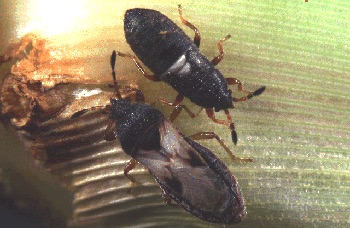Early Alert for Chinch Bugs
go.ncsu.edu/readext?475063
en Español / em Português
El inglés es el idioma de control de esta página. En la medida en que haya algún conflicto entre la traducción al inglés y la traducción, el inglés prevalece.
Al hacer clic en el enlace de traducción se activa un servicio de traducción gratuito para convertir la página al español. Al igual que con cualquier traducción por Internet, la conversión no es sensible al contexto y puede que no traduzca el texto en su significado original. NC State Extension no garantiza la exactitud del texto traducido. Por favor, tenga en cuenta que algunas aplicaciones y/o servicios pueden no funcionar como se espera cuando se traducen.
Português
Inglês é o idioma de controle desta página. Na medida que haja algum conflito entre o texto original em Inglês e a tradução, o Inglês prevalece.
Ao clicar no link de tradução, um serviço gratuito de tradução será ativado para converter a página para o Português. Como em qualquer tradução pela internet, a conversão não é sensivel ao contexto e pode não ocorrer a tradução para o significado orginal. O serviço de Extensão da Carolina do Norte (NC State Extension) não garante a exatidão do texto traduzido. Por favor, observe que algumas funções ou serviços podem não funcionar como esperado após a tradução.
English
English is the controlling language of this page. To the extent there is any conflict between the English text and the translation, English controls.
Clicking on the translation link activates a free translation service to convert the page to Spanish. As with any Internet translation, the conversion is not context-sensitive and may not translate the text to its original meaning. NC State Extension does not guarantee the accuracy of the translated text. Please note that some applications and/or services may not function as expected when translated.
Collapse ▲We are getting our first reports of chinch bug activity in St. Augustinegrass in Wilmington, NC and, similar to other turf pests (fall armyworms) this year, the timing is very early. Chinch bugs thrive in hot, dry conditions and populations usually become an issue much later in the summer. Early damage starts as small irregularly shaped discolored areas (yellow or tan) that eventually die. Problems often start in areas that receive the most sun and are very dry.
Southern chinch bugs are easy to control if detected early. Check for chinch bugs by parting the grass at the interface between healthy and damaged areas and inspect the lower stems and thatch. Another method is flotation. Cut off both ends of a large coffee can or similar container and remove one rim with tin snips to produce a sharp edge. Push the edge down through the thatch in areas to be checked. Flood the can with water to the brim. If chinch bugs are present, they will float to the surface within a few minutes. Infestations of 20-25 nymphs per ft2 (4-5 per 6-inch diameter can) will cause enough damage to warrant control.



